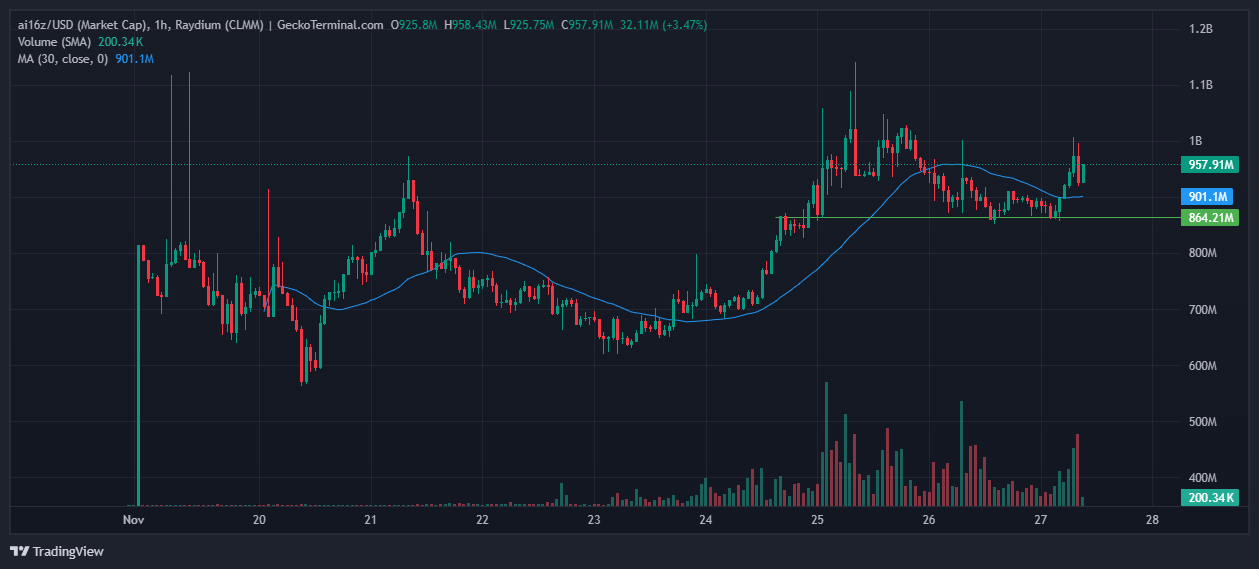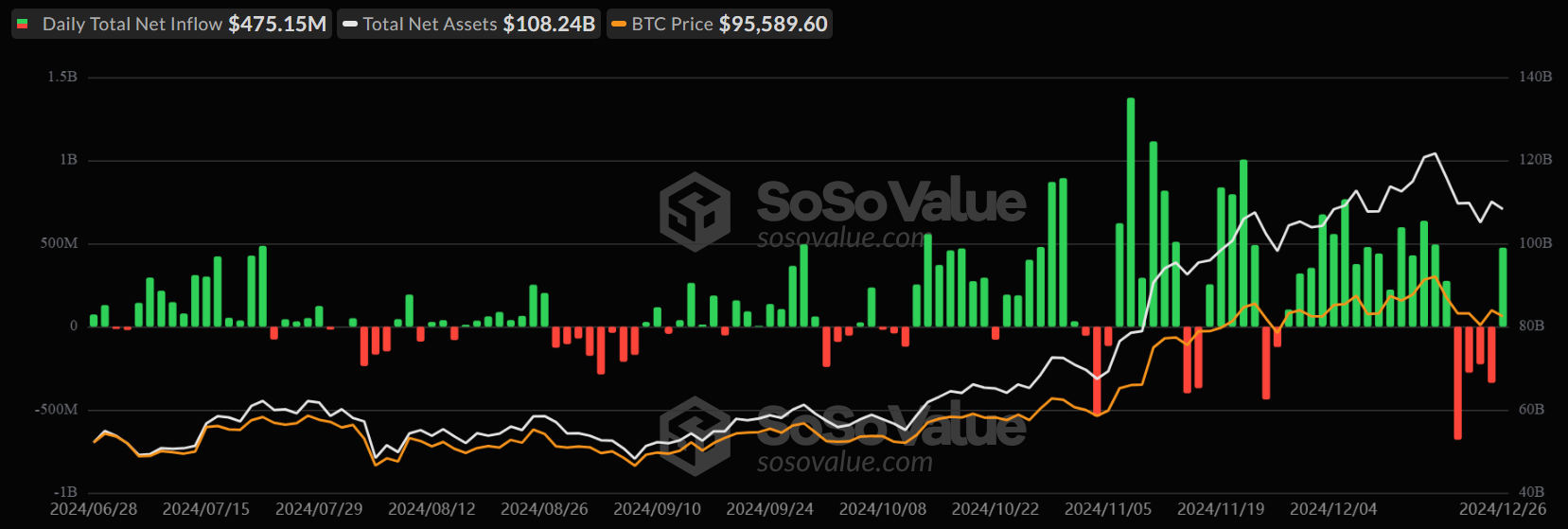Kaisar Network Airdrop: Revolutionizing Decentralized GPU Computing
Kaisar Network Airdrop: Revolutionizing Decentralized GPU ComputingCredit: CryptoNetworkLiveIntroduction to Kaisar Network.Kaisar Network Airdrop A Decentralized Physical Infrastructure Network (DePIN) called Kaisar Network is at the forefront of innovation, with the goal of revolutionizing the access and use of GPU computing resources. The increasing popularity of AI and machine learning (ML) has led to an increase in demand for computing infrastructure that can operate at a high level and be scalable. Kaisar is a pioneer in gathering data on idle GPUs from various sources worldwide, including independent data centers, crypto miners, and households. This approach provides decentralized, cost-efficient, and scalable solutions to meet the growing computational needs of industries and researchers.Credit: @KaisarNetworkBy utilizing its decentralized architecture, Kaisar facilitates the seamless consolidation of these resources into a well-organized and easily accessible network, bridgeting between untapped GPU potential and the increasing need for compute power. The paradigm shift in GPU computing is characterized by this disruptive approach, which not only empowers users but also challenges the traditional dominance of centralized cloud providers.Mission Statement.A clear and transformative goal of the Kaisar Network is to democratize access (and use) to high-performance computing while optimizing utilization of existing GPU resources. The Kaisar project envisions a future where the abundance of idle GPUs, spread across data centers, personal residences and cryptocurrency mining operations, is harnessed to meet the growing demand for AI and ML tasks.Key Objectives of Kaisar's Mission:Credit: @KaisarNetworkScalable Computing Solutions:Kaisar addresses the scalability challenges faced by traditional centralized GPU providers.? Utilizing idle GPUs worldwide, the network provides continuous access to a dynamic and flexible set of resources that can be modified as needed.Cost Efficiency for Users:Large-scale businesses and researchers are often impeded by the high costs of centralized GPU services. The decentralized model offered by Kaisar significantly reduces expenses, including some unreported costs like egress fees, and eliminates these barriers. However...Environmental Sustainability:The utilization of unused GPU resources through Kaisar reduces waste and provides an environmentally friendly alternative to energy-intensive centralized systems. A more sustainable approach to powering AI and ML workloads is made possible by this.Empowering a Global Community:By leveraging its decentralized architecture, Kaisar facilitate access to the GPU economy for individuals and organizations of all sizes. The ability to participate in the network and earn rewards is available to all GPU owners, regardless of their size, making it a win-win situation.Beyond being a replacement for centralized systems, the Kaisar Network Airdrop vision is also reimagining computing power's distribution and source. Through the integration of blockchain technology and decentralized principles, Kaisar establishes a stable, efficient, and secure environment. Apart from addressing current computational issues, the platform is an essential component in the future of AI and machine learning technology. By introducing an innovative model, Kaisar is challenging the current status of GPU computing and making it available to everyone.Some extra details on Official Documentation of Kaisar NetworkThe Challenges in GPU Computing.There are numerous obstacles that the industry faces in addressing the demand for high-performance computing through GPUs. These problems can be categorized broadly, including increasing compute needs, cost issues with traditional GPU cloud providers, and limitations of centralized GPU computing. Let's explore each briefly:1. Increasing Compute Requirements.Artificial intelligence (AI) and machine learning(ML), have accelerated the exponential growth of compute needs.Image credit: Exponential Change in Spending and Compute Requirements | KaisarGrowing Investments in AI:In 2023, spending on AI-based systems worldwide amounted to an impressive $154 billion. This amount is expected increase as AI solutions are increasingly adopted by industries like finance and healthcare in addition to logistics. The growth is indicative of the growing requirement for higher computing power to develop and implement advanced AI models.'Demand for Advanced AI Hardware:AI advancements are primarily dependent on dedicated GPUs, TPU/TPC, and custom AI chips. The computational complexity involved with training large-scale models, processing massive datasets, and performing real-time inference tasks is a crucial aspect of these devices. The focus on investing in hardware underscores the magnitude of compute requirements that organizations must meet to remain competitive....2. Cost constraints of conventional GPU Cloud providers.?Although traditional cloud
.webp)
Kaisar Network Airdrop: Revolutionizing Decentralized GPU Computing
Introduction to Kaisar Network.
Kaisar Network Airdrop A Decentralized Physical Infrastructure Network (DePIN) called Kaisar Network is at the forefront of innovation, with the goal of revolutionizing the access and use of GPU computing resources. The increasing popularity of AI and machine learning (ML) has led to an increase in demand for computing infrastructure that can operate at a high level and be scalable. Kaisar is a pioneer in gathering data on idle GPUs from various sources worldwide, including independent data centers, crypto miners, and households. This approach provides decentralized, cost-efficient, and scalable solutions to meet the growing computational needs of industries and researchers.
By utilizing its decentralized architecture, Kaisar facilitates the seamless consolidation of these resources into a well-organized and easily accessible network, bridgeting between untapped GPU potential and the increasing need for compute power. The paradigm shift in GPU computing is characterized by this disruptive approach, which not only empowers users but also challenges the traditional dominance of centralized cloud providers.
Mission Statement.
A clear and transformative goal of the Kaisar Network is to democratize access (and use) to high-performance computing while optimizing utilization of existing GPU resources. The Kaisar project envisions a future where the abundance of idle GPUs, spread across data centers, personal residences and cryptocurrency mining operations, is harnessed to meet the growing demand for AI and ML tasks.
Key Objectives of Kaisar's Mission:
Scalable Computing Solutions:
Kaisar addresses the scalability challenges faced by traditional centralized GPU providers.? Utilizing idle GPUs worldwide, the network provides continuous access to a dynamic and flexible set of resources that can be modified as needed.
Cost Efficiency for Users:
Large-scale businesses and researchers are often impeded by the high costs of centralized GPU services. The decentralized model offered by Kaisar significantly reduces expenses, including some unreported costs like egress fees, and eliminates these barriers. However...
Environmental Sustainability:
The utilization of unused GPU resources through Kaisar reduces waste and provides an environmentally friendly alternative to energy-intensive centralized systems. A more sustainable approach to powering AI and ML workloads is made possible by this.
Empowering a Global Community:
By leveraging its decentralized architecture, Kaisar facilitate access to the GPU economy for individuals and organizations of all sizes. The ability to participate in the network and earn rewards is available to all GPU owners, regardless of their size, making it a win-win situation.
Beyond being a replacement for centralized systems, the Kaisar Network Airdrop vision is also reimagining computing power's distribution and source. Through the integration of blockchain technology and decentralized principles, Kaisar establishes a stable, efficient, and secure environment. Apart from addressing current computational issues, the platform is an essential component in the future of AI and machine learning technology. By introducing an innovative model, Kaisar is challenging the current status of GPU computing and making it available to everyone.
Some extra details on Official Documentation of Kaisar Network
The Challenges in GPU Computing.
There are numerous obstacles that the industry faces in addressing the demand for high-performance computing through GPUs. These problems can be categorized broadly, including increasing compute needs, cost issues with traditional GPU cloud providers, and limitations of centralized GPU computing. Let's explore each briefly:
1. Increasing Compute Requirements.
Artificial intelligence (AI) and machine learning(ML), have accelerated the exponential growth of compute needs.
Growing Investments in AI:
In 2023, spending on AI-based systems worldwide amounted to an impressive $154 billion. This amount is expected increase as AI solutions are increasingly adopted by industries like finance and healthcare in addition to logistics. The growth is indicative of the growing requirement for higher computing power to develop and implement advanced AI models.'
Demand for Advanced AI Hardware:
AI advancements are primarily dependent on dedicated GPUs, TPU/TPC, and custom AI chips. The computational complexity involved with training large-scale models, processing massive datasets, and performing real-time inference tasks is a crucial aspect of these devices. The focus on investing in hardware underscores the magnitude of compute requirements that organizations must meet to remain competitive....
2. Cost constraints of conventional GPU Cloud providers.?
Although traditional cloud providers offer convenience, they are often so expensive that many organizations cannot afford them.
Hidden Costs:
Businesses often face unexpected costs, such as egress fees, which involve the transfer of data from cloud services. Hidden costs, along with inefficient resource allocation, can significantly increase overall expenses.
Wasteful Deployments:
This is especially true for smaller applications where the use of GPUs has inefficiencies. Despite not requiring the GPU's full capacity, certain techniques use GPU pass-through methods to allocate an entire GPU to a workload. The outcome is reduced utilization and unused goods.
Rising Costs of AI Technology:
Despite the benefits of improved AI models, their implementation necessitated significant compute infrastructure investment. The use of advanced technologies necessitates robust hardware and extensive energy and cooling resources, which contribute to higher operational expenses.
3. Centralized GPU Computing Limitations.
While the GPU is widely used, its centralized architecture and other infrastructure constraints make it less flexible and efficient in use.
Scalability Issues:
Deficiencies of GPU resources are highly variable and require constant attention from centralized providers. Scaling up infrastructure to handle peak workloads often involves costly capital and lead times. Why?
High Upfront Costs:
Large GPU clusters demand significant financial resources. The plan involves procuring expensive graphics card GPUs, developing facilities capable of accommodating their power and cooling requirements, and hiring specialized personnel to manage their upkeep and operation.
Latency and Power Consumption:
Centralized solutions may have some limitations, including high network latency, which can impact performance in applications that prioritize latexity. Moreover, the deployment of dense GPUs consumes vast amounts of power and generates significant heat, necessitating sophisticated cooling mechanisms that raise operational expenses.
Kaisar Network: A Decentralized Solution.
The Kaisar Network Airdrop unveils a revolutionary decentralized GPU computing platform in an age where the need for power is amplified. The integration of blockchain with artificial intelligence (AI) in Kaisar altering the nature of computing resources. The use of Kaisar is designed to address the inefficiencies of traditional centralized systems and offer an affordable, flexible, and safe solution that can meet the evolving needs of industries that heavily rely on AI and machine learning (ML) applications.
What's Kaisar Offering?
The Kaisar Network, which is fundamentally a Decentralized Physical Infrastructure Network (DePIN), unites underutilized GPUs from independent data centers, cryptocurrency miners, and consumer households. With Kaisar, users can access GPU power without the need for expensive subscriptions or connectivity to traditional cloud providers, as it seamlessly integrates blockchain technology and AI.
Key Features.
Cost Efficiency:
The utilization of idle GPU resources from multiple sources by Kaisar significantly decreases computing expenses. In contrast to traditional providers, Kaisar optimizes resource allocation by ensuring users receive only the services they need.
Scalability and Flexibility:
A user can deploy GPU clusters at their convenience, as they are specifically designed for projects. It reduces provisioning times and allows exceptional flexibility for managing variable workloads.
Security:
Advanced data security and integrity protocols are implemented by Kaisar through the use of advanced risk detection mechanisms. For sensitive workloads, Kaisee offers a Secure Cloud option that is industry best in privacy and security.
Core Products.
Kaisar GPU Container:
A revolutionary method of packaging GPU workloads in efficient and secure containers. By making resource management easier for users, this ensures that GPU resources are utilized to their full potential.
Kaisar Ray Cluster:
Supports distributed AI/ML workloads by facilitating the efficient management and expansion of Ray clusters.' Users can now perform complex calculations with ease thanks to this feature....
Kaisar K8s:
GPU-based service that is fully managed for Kubernetes deployment.. Kaisar K8s facilitate the coordination of GPU workloads, simplifying the deployment and scaling of AI/ML applications for developers and enterprises.
Kaisar Worker:
The network can receive contributions from both idle GPU users and organizations thanks to this innovative product. Through the use of KAI tokens, participants can earn rewards and engage in activities that maximize resource utilization while also benefiting their involvement.
Why Kaisar Stands Out.
The unique advantages of Kaisar Network Airdrop, which addresses the shortcomings of centralized systems, include cost-effectiveness and security improvements. Its decentralized model not only makes high-performance computing more accessible but also establishes the foundation for a robust global GPU cloud economy. As a researcher, developer or enterprise, Kaisar gives you access to scaled-up solutions that are tailored to the needs of today's AI and ML applications.
The Kaisar Network's Airdrop Advantage in the Competitive Landscape.
The Kaisar Network stands out as a significant aspect of the fast-developing decentralized infrastructure and GPU computing landscape. Integrated with new technologies, it offers a range of unique advantages over traditional systems. See the detailed information on Kaisar's competitiveness here:.
1. Decentralized Infrastructure.
Typical GPU computing relies heavily on centralized data centers, but these systems often have significant drawbacks such as expensive components and resource limitations. The Kaisar approach is decentralized, with GPU resources being redistributed from independent data centers to crypto miners and back to individual contributors.
Several significant advantages are associated with this decentralized structure:
Unmatched Control: GPU allocations are highly regulated, giving users the ability to adjust resources according to project requirements.
The network provides flexibility in scaling, allowing it to adjust to workload requirements without the need for long-term contracts or complex permission models.
The utilization of underutilized GPUs by Kaisar optimizes resource utilization, resulting in significant savings over traditional cloud solutions.
Decentralization reduces the need to rely on one point of failure, thus improving network resilience and maintaining full service even at times of peak demand.
2. PoW: Token Incentive Program.)
A new incentive system, known as Proof of Physical Work (PoPW) is introduced by Kaisar. This approach rewards GPU providers for providing verified physical work, which includes ensuring uptime and achieving certain performance metrics.
GPU vendors' device information, uptime, and performance are monitored and validated by checkers employed by Kaisar. The blockchain is used to validate the data and calculate rewards.
Providers are rewarded fairly for their performance, which is done by sharing the same rewards with others.
Engaging in Participation: By enabling GPU users, both private and public entities, to contribute their idle resources as input, Kaisar fosters a robust and diverse ecosystem.
Besides offering incentives for participation, PoPW also ensures efficient operation of the network, maintaining high standards of service for users. ".
3. Blockchain-Driven Efficiency.
A powerful layer-one blockchain that optimizes decentralized physical infrastructure networks (DePIN) is the backbone of Kaisar, which employs the peaq blockchain. It introduces several technical advantages:
Peaq supports more than 100,000 transactions per second (TPS), which makes the network scale easily. Why?
The peaq blockchain offers minimal costs, around $0.00025 per transaction, making it a cost-effective option for both users and providers. This benefits the system.
Kaisar foster a distributed training model for AI/ML models, which allows for collaborative development across an entire global network. The sharded architecture of peaq is used to process AI tasks in real-time, which saves training time and improves efficiency.
The implementation of Blockchain also provides assurances for data security, transparency and immutability in AI and GPU computing.
GPU Computing: A New Era in Computers.
By blending decentralized infrastructure, token-based incentivization, and blockchain technology with GPU computing, Kaisar alters the landscape of GPU computation. It not only challenges the traditional system but also creates a more flexible, affordable, and efficient future for AI and decentralized cloud services.
What makes GPU Computing relevant in the future of Kaisar?
GPUs are now in ever greater demand due to technological advancements, with the growth of artificial intelligence (AI) and machine learning (ML). Traditional cloud-based solutions are not efficient, scalable or expensive to maintain. Why? Through its innovative decentralized approach, Kaisar can tackle crucial issues like resource underutilization and sustainability while also fostering innovation in GPU computing.
1. Addressing Underutilization.
Due to inefficiencies in their deployment and usage, GPU resources are mostly idle worldwide. These assets are not as utilized by AI and ML applications as Kaisar makes them available.
Independent Data Centers.
There is a lack of recognition for independent data centers. In 2019, the average server utilization rate in U.S. data centers was just 18%, as per reports from industry sources. The lack of utilization highlights a substantial amount of inactive computing resources that could be utilized more efficiently. These GPUs are integrated into Kaizar's network, ensuring their optimal utilization.
Crypto Miners.
As the Ethereum blockchain moves from proof-of-work (PoW) to proofs-to-stake (S), many GPUs previously used for mining are idle. Why? The Kaisar network now has a new target for advanced AI and ML workloads, thanks to the surplus of high-performance hardware that was once critical to cryptocurrency operations.
Consumer GPUs.
Consumer-grade GPUs, which are commonly used in personal computers and gaming equipment, are often utilized for low-intensity tasks. GPUs that can handle exceedingly high workloads are a valuable asset, but it is not commonly used. By allowing individual users to share their GPU resources, Kaisar unlocks their full potential within the decentralized network.
Kaisar's GPU ecosystem is built on the principle of aggregating and redistributing GPUs from these sources, which helps to balance the market by creating a strong supply-demand ecosystem. Not only does it reduce waste but this new model also make the high-performance computing possible more easily and economically accessible.
2. Sustainability and Innovation.
By utilizing Kaisar's decentralized model, not only does it increase resource efficiency but also promote sustainability by decreasing dependence on traditional centralized infrastructures.
Reduced Environmental Impact.
The physical infrastructure, energy consumption, and cooling facilities in centralized data centers are substantial investments. Their consumption of power and heat generation contributes to their significant contribution to the carbon footprint. The utilization of underutilized GPUs, which are distributed and available from various sources, in Kaisar is achieved without requiring additional computing infrastructure.
Maximizing Existing Resources.
Instead of building from scratch, Kaisar strives to enhance existing structures. This strategy helps to reduce both e-waste and the environmental costs involved in manufacturing new hardware. The reuse of resources in an innovative manner is designed to align with global sustainability goals.
Driving Technological Innovation.
Kaisar promotes innovation by decentralizing GPU computing. The approach not only democratizes access to high-performance computing but also helps smaller enterprises and developers overcome obstacles. The emergence of this opens up new opportunities for AI and ML that were previously limited to highly profitable corporations.
Conclusion.
The model proposed by Kaisar is not solely focused on addressing the current issues related to GPU computing; it's also a paradigm shift towards embracing generative, efficient, and universal technologies. Kaisar aims to break free from GPU-based computing by exploiting idle resources and acknowledging environmental impact, signifying the beginning of a decentralized future in technology.
What's Your Reaction?















.jpg)
.jpeg)











.webp)



